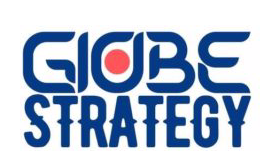Tools and Resources centre
Exploring Business
Developing New Products and Services
A central theme of this book is that there is, or should be, a constant struggle going on in every organization, business, and system. The struggle is fueled by the dynamic tension that exists between delivering Midas feature-rich versions of products and services using extravagant engineering and delivering low-cost Hermes versions of products and services using frugal engineering (see Figure 1). Midas versions are high-end products for nonprice-sensitive consumers. Hermes versions are for price-sensitive consumers. The results of this dynamic tension between Midas versioning and Hermes versioning are Atlas products and services. Atlas products and services are designed for mainstream consumers. Atlas products and services incorporate the product design features that will attract the broadest customer base and will also be profitable. The driving force behind the development of Midas, Atlas, and Hermes versions is driven by the implicit creative genius that everyone possess and most businesses should possess as they engage in continuous learning-about and learn-by-doing activities
Building Strategy and Performance
|
The approach described here is based on strategy dynamics (Warren, 2008), a rigorous, fact-based method for developing and managing strategy. The underlying science is known as system dynamics, which originated at the Massachusetts Institute of Technology in the 1960s (Forrester, 1961; Sterman, 2000). Strategy dynamics explain why the performance of an organization has changed through time in the way that it has, provide estimates of where it is likely to go in the future, and |
|
allow management to design strategies and policies to improve that future path. Strategy dynamics achieve this by building an integrated, fact-based picture of how the resources of your business are developing through time, driven by mutual interdependence, management policies, external opportunities, and constraints. |
Electronic Commerce: The Strategic Perspective
This book is written both for practitioners and business students. Managers wishing to understand how electronic commerce is revolutionizing business will find that our comprehensive coverage of essential business issues (e.g., pricing and distribution) answers many of their questions. Advanced business students (junior, seniors, and graduate students) will find that the blend of academic structure and practical examples provides an engaging formula for learning.
The book’s title reflects some key themes that we develop. First, we are primarily concerned with electronic commerce, which we define as using technology (e.g., the Internet) to communicate or transact with stakeholders (e.g., customers). Second, we discuss how organizations must change in order to take advantage of electronic commerce opportunities. In this sense, our book offers the strategic perspective (i.e., the best way to operate a successful business in the 21st century). Third, with the growing importance of the Internet and related technologies, organizations must take electronic commerce into account when they are creating strategic plans. Thus, electronic commerce is a strategic perspective that all firms must adopt, both in the present and in the future. In other words, an organization that does not explicitly consider electronic commerce as a strategic imperative is probably making a crucial error. Here, we focus primarily on the opportunities and tactics that can lead to success in the electronic marketplace.
Principles of Marketing
Global Strategy
Free textbook by boundless on global strategy

